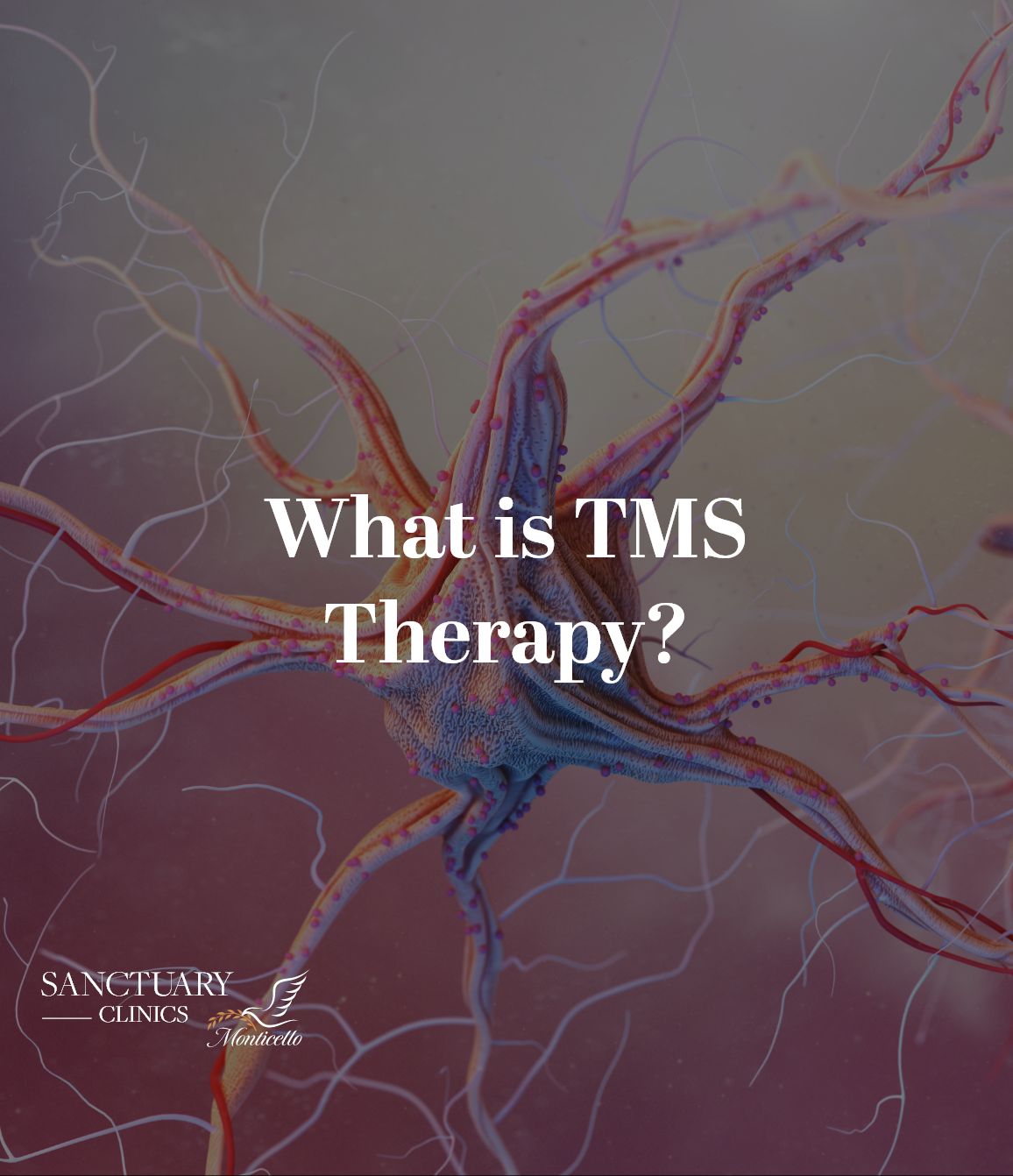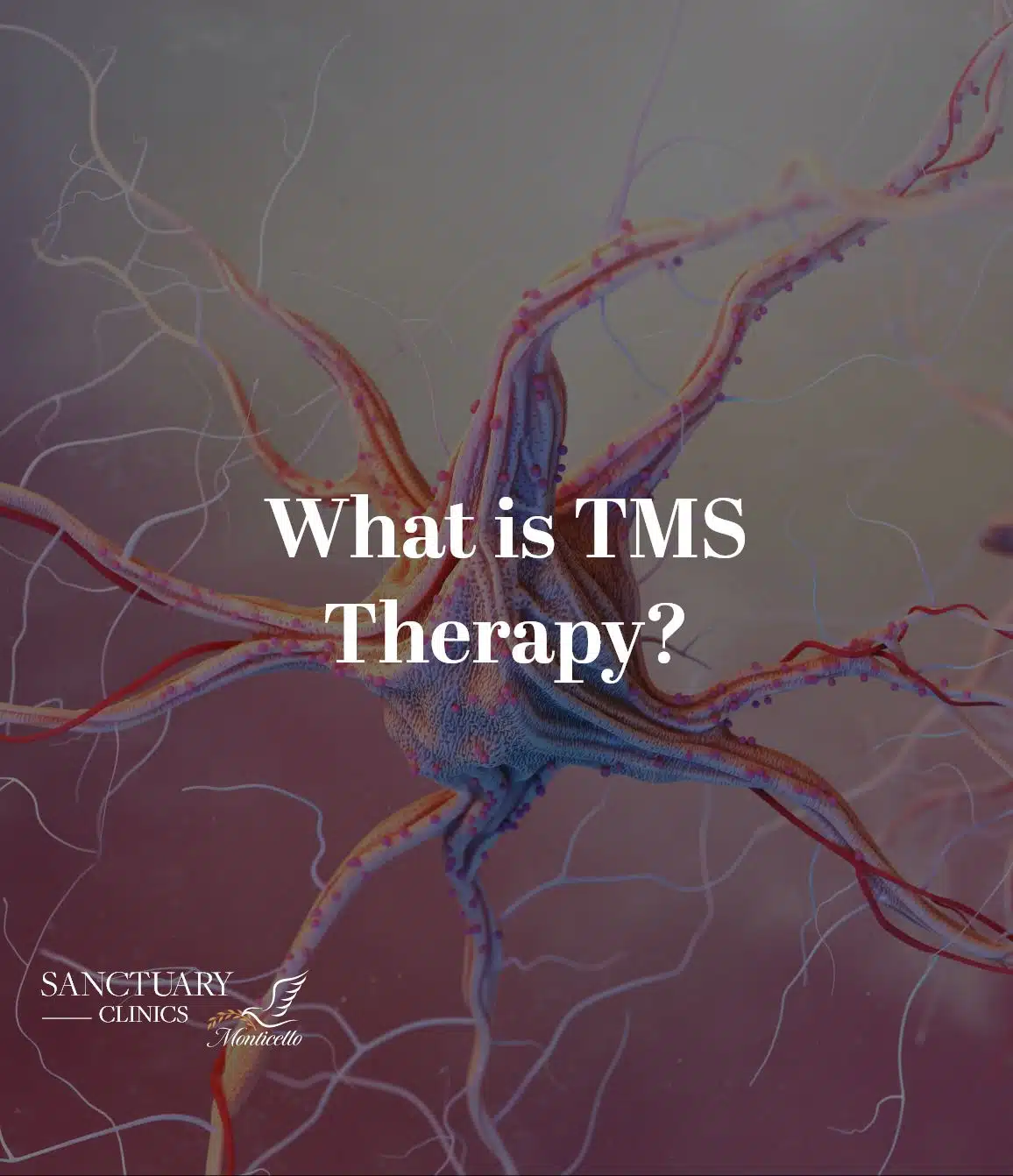

Contents
What is TMS Therapy?
Transcranial magnetic stimulation (TMS) is a procedure which uses magnetic fields to stimulate nerve cells in the brain to improve symptoms of major depression and other mental health and mood maladies. TMS is “non-invasive” in that it is done without any sedation, surgery, or cutting of the skin. TMS has been effective in cases where other more traditional treatment methods have not, bringing about significant improvements for many patients.
At Sanctuary Clinics, we are excited to offer TMS in combination with several other evidence-based therapeutic modalities—
- CBT
- DBT
- EMDR
- Neuroscience
- Micro-Neurofeedback
- Equine Therapy
How Does TMS Work?
TMS uses a small electromagnetic coil controlled by a computer program to deliver short, powerful bursts of magnetic energy focused precisely on your limbic system, an area of the brain responsible for mood regulation, producing very small electrical currents to stimulate cells within the brain which release neurotransmitters. The healing power of TMS lies in its ability to stimulate neurons, normalize the concentration of neurotransmitters, and rewire the connections between neurons to contribute to normal functioning.
What is the success rate of TMS therapy?
TMS has a proven to be an effective option for people who have not found relief in more traditional approaches and with antidepressant medications. TMS is effective, with some studies reporting more than 70% of patients experience significant improvement. Success rates will vary depending on many factors—the severity of symptoms and your responsiveness to treatment among them. TMS is an option that should be discussed with your provider to determine if it is right for your particular needs.
What you need to know about TMS
Who should avoid TMS treatment?
While TMS is generally considered safe, there are certain people who should avoid or proceed with caution when considering this treatment. Patients with metallic or electronic implants such as cochlear implants and pacemakers may not be suitable candidates for TMS. Patients with a history of seizures for certain neurological disorders should also discuss the risks of TMS treatment with their providers.
Are there any long-term side-effects
of TMS treatment?
Are there any long-term side-effects of TMS treatment?
TMS has not been associated with any long-term side-effects. The most often reported side effects are mild and temporary, including headache, scalp discomfort or tingling, and lightheadedness. TMS a safe treatment option for most people.
How long does TMS treatment last?
Each TMS session typically ranges from 20 to 40 minutes in duration. A full course of treatment typically spans four to six weeks, with sessions administered daily from Monday to Friday. The exact duration may vary based on your needs and treatment response.
How many TMS treatments are needed?
The number of TMS treatments required depends on the patient and their treatment response. A standard treatment course consists of 20 to 30 sessions, with some people experiencing improvement in symptoms within the first few weeks. However, it is essential to complete the full course of treatment to maximize the potential benefits of TMS therapy.
Does TMS treatment work for depression?
TMS treatment has been found to be effective for depression. Numerous clinical studies and real-world experience have demonstrated its efficacy in reducing depressive symptoms. TMS is found to be particularly beneficial for people who have not responded adequately to traditional antidepressant medications or who have experienced intolerable side-effects from such medications.
TMS treatment has also shown promise in other psychiatric conditions, such as anxiety disorders, obsessive-compulsive disorder (OCD), and post-traumatic stress disorder (PTSD). Research is ongoing to explore the full potential of TMS in treating these conditions and to refine treatment protocols.
How much does TMS treatment cost?
TMS treatment cost will vary treatment program to treatment program. Other factors may also figure in, such as the number of sessions you need. On average in the U.S., TMS sessions run between $300 and $500 a session and a full course of treatment is between 20 and 30 sessions.
Is TMS treatment covered by insurance?
Most insurance coverage now recognize the therapeutic benefits of TMS. Many plans cover treatment. You’ll want to talk to your provider and review the specifics of your policy.
Your Experience of TMS at Sanctuary Clinics
Sit back, relax, and benefit from cutting-edge treatment technology at Sanctuary Clinics!
TMS is typically administered in a 36-session process, in 20-minute sessions, in combination with medication management and other therapeutic modalities that are a part of your overall treatment program. During each session, you will be seated comfortably in a chair and a cushioned cap will be placed on your head. The cap sends very short bursts of pulsing magnetic current to stimulate targeted areas of your brain to help relieve your symptoms. You will be fully awake and aware the entire session. Most patients begin seeing positive results after just a few sessions!




